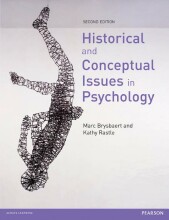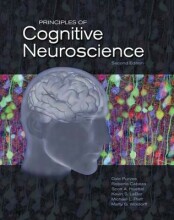Leadership in organizational settings
66 important questions on Leadership in organizational settings
How do we call influencing, motivating, and enabling others to contribute toward the effectiveness and success of the organizations of which they are members?
What key components does leadership have?
- leaders motivate through persuasion and other influence tactics
- leaders enable others; allocate resources, optimize work relationships, etc.
how do we call the view that leadership is a role, not a position assigned to one person; consequently people within the team and organization lead each other?
- Higher grades + faster learning
- Never study anything twice
- 100% sure, 100% understanding
When does shared leadership exist?
- when employees champion the introduction of new technologies and products
- when employees engage in organizational citizenship behaviors to assist performance and well-being
what is essential for shared leadership to work
- formal leaders are willing to delegate power and encourage employees to take initiative and risks without fear of failure
- a collaborative rather than a competitive culture
- lack of formal authority
- employees develop effective influence skills
how do we call a leadership perspective that explains how leaders change teams or organizations by creating, communicating, and modeling a vision for the organization or for unit and inspiring employees to strive for that vision?
Which types of leadership are there?
- transformational
- managerial
- implicit
- personal attributes
What are the core elements of transformer leadership?
- model the vision
- encourage experimentation
- build commitment to the vision
how do we call a positive image or model of the future that energizes and unifies employees?
what are the features of an effective strategic vision?
- refers to an idealized future with a higher purpose
- associated with personal values that fulfill the needs of stakeholders
- meaningful and appealing to employees and energizes them to strive for the ideal
- is a challenging, distant, abstract goal.
- unifying, bonds employees together and aligns employee’s values with the organization’s values
Why is a strategic vision abstract?
- the vision hasn’t yet been experienced, so it is not possible to detail what the vision looks like
- an abstract description enables the vision to remain stable over time, yet is flexible for operational adjustments in a shifting environment
What determines a strategic vision’s effectiveness
how does a leader successfully convey a strategic vision to followers and other stakeholders?
- generate meaning and motivation by relying on symbols, metaphors, stories and other ways that go beyond plain language
- carefully frame the vision to generate meaning and emotion
- communicate the vision with humility, sincerity, and a level of passion
What are ways for a leader to model the vision?
- creating significant events or actions that show the vision and the progress
- ensuring routine daily activities are consistent with the vision and it’s values
Why is it important to mode the vision?
- it builds employee trust in the leader
Why is it important for transformational leaders to encourage experimentation?
in what ways build transformational leaders commitment towards the vision?
- demonstrate a can-do attitude by enacting and behaving consistently with their vision, persistence and honesty reflecting an image of honesty, trust, and integrity
- through rewards, recognition, and celebrations on milestones of progress
- encourage experimentation involves employees in the change process making it a collective activity
How do we call a personal trait or relational quality that provides referent power over followers?
how is charisma distinct from transformational leadership?
- charismatic leadership tends to produce dependent followers, where transformational leading builds follower empowerment
- charismatic leaders may become intoxicated by their power which leads to a greater focus on self-interests than the common good
what are the advantages of transformational leadership?
- subordinates more satisfied and have higher affective organizational commitment
- subordinates perform better and engage more in citizenship behaviors,
- employees make better more creative decisions
- organizational commitment and financial performance increases
what are the problems of transformational leadership?
- hard to measure if it works
how do we call a leadership perspective stating that effective leaders help employees improve their performance and well-being toward current objectives and practices?
what are the differences between managerial leadership and transformational leadership?
- managerial leadership assumes the organization’s objectives are stable and aligned with the external environment, transformational leadership assumes the organization’s misaligned
- managerial leadership focuses on developing or maintaining effectiveness of employees and work units towards established objectives and practices, while transformational leadership focuses on change of direction
- managerial leadership is more micro-focused and concrete because it relates to specific performance and well-being of individuals and work units, transformational leadership is more macro-focused and abstract because it changes and entire organization
how do managerial leadership and transformational leadership interdepend on each other?
- transformational leadership identifies, communicates, and builds commitment to a better future, managerial leadership translates the abstract vision into more specific operational behaviors and practices, improves employee performance in the pursuit of the future ideal
- transformational leadership set the right direction, managerial leadership gets the organization towards the directed goal.
what does a task-oriented leader do?
- assign work and clarify responsibilities
- set goals and deadlines
- evaluate and provide feedback on work quality
- establish well-defined best work procedures
- plan future work activities
What does a people-oriented leader do?
- show interests in others as people (instead of just employees or even ‘tools’)
- listen to employees
- make the workplace more pleasant
- show appreciation to employees for their performance contribution
- is considerate of employee needs
how do we call the view that leaders serve followers, rather than vice versa; leaders help employees fulfill their needs ad are coaches, stewards, and facilitators of employee development?
What are the features of servant leadership?
- extension or variation of people-oriented leadership
- leaders have natural desire to serve others; deep commitment to help others in personal growth
- leaders maintain relationships with others that are humble, egalitarian, and accepting
- leaders anchor their decisions and actions in ethical principles and practices
of how many components does the model of the path-goal leadership theory consist?
- 4 leadership styles
- 2 employee contingencies
- 2 environmental contingencies
- 3 indicators of leader effectiveness
which leadership style of the path-goal leadership theory is described; encourage and facilitate employee involvement in decisions.
which leadership style of the path-goal leadership theory is described; emphasizes behaviors that encourage employees to reach their peak performance.
what are the employee contingencies of the model of the path-goal leadership theory?
- skills and experience
- locus of control
which leadership style should be used with inexperienced and unskilled employees, and why?
- a combination of directive and supportive
- directive leadership gives information about how to accomplish the task
- supportive leadership helps them cope with the uncertainties of unfamiliar work situations
which leadership style should not be used with experienced and skilled employees, and why?
- directive leadership style
- it introduces too much supervisory control
how do we call people who believe they have control over their work environment?
people with an internal locus of control
how do we call people who believe that their performance is due more to luck and fate?
which leadership style should be used with people with an external locus of control and which one with people with an internal locus of control?
- directive and supportive leadership styles
- participative and achievement-oriented leadership styles
which environmental contingencies are there?
- task structure
- team dynamics
which leadership style should be used when the task is non routine, and why?
- directive style; minimizes role ambiguity that occurs in complex work situations
- participative; in lack of rules and procedures gives it discretion to achieve challenging tasks
which leadership styles should, and should not be used when the task is routine, and why?
- not directive; unnecessary and may be viewed as unnecessarily close control
- not participative; because they lack discretion over their work
- supportive leadership; helps cope with tedious nature of the work and lack of control over the pace of the work
when should a leader use supportive leadership style considering team dynamics and why?
- when team cohesion is low;
- cohesive teams with performance-orientated norms act as a substitute for most leader interventions,
- high team cohesion substitutes for supportive leadership, where performance oriented team norms substitute for directive and achievement-oriented leaderships
what are the features leadership effectiveness can be measured with?
- employee motivation
- employee satisfaction
- leader acceptance
what are the four leadership styles that the situational leadership theory identifies?
- telling
- selling
- participating
- delegating
which leadership styles does Fiedler’s contingency model identify?
two leadership styles that correspond to people- and task-oriented leadership
how do we call the degree if power and influence that the leader possesses in a particular situation?
situational control
how do we call the extend to which the leader possesses legitimate, reward, and coercive power over subordinates?
how do we call the clarity or ambiguity of operating procedures?
how do we call how much employees trust and respect the leader and are willing to follow his guidance?
leader-member relations
according to Fiedler’s contingency model, what are the characteristics of the highest situation favorableness for the leader?
- good employee-leader relations
- high task structure
- strong position power
besides the fact that there wasn’t much empirical evidence, what are the contributions Fiedler made to leadership knowledge with his model?
- it recognizes the importance of leader’s power in determining the best leadership style
- states that leaders aren’t able to change their style easily, they use mainly, the style most consistent with their personality and values
how do we call a theory identifying conditions that either limit a leader’s ability to influence subordinates or make a particular leadership style unnecessary
leadership substitutes
according to the leadership substitutes theory, what are the conditions making task-oriented leadership unnecessary?
- when performance-based reward systems keep employees directed towards organizational goals
- increasing employee skill and experience
what are the reasons people overestimate the leader’s influence on organizational outcomes?
- leadership is a useful way to simplify life events; easier to explain successes and failures with the leader’s ability
- strong tendency to believe that life events are generated more by people than uncontrollable natural forces; feel better thinking results come from actions of leaders
what are the eight leadership attributes?
- personality
- self-concept
- drive
- integrity
- leadership motivation
- knowledge of business
- cognitive and practical intelligence
- emotional intelligence
what characteristics does an effective leader have considering; personality?
- Extraversion (outgoing, talkative, sociable, assertive)
- Conscientiousness (careful, dependable, self-disciplined)
what characteristics does an effective leader have considering; self-concept?
- Positive self-evaluation
- High self-esteem and self-efficacy
- Complex, internally consistent self-concept
- Internal locus of control
what characteristics does an effective leader have considering drive?
- Inner motivation to pursue goals
- Inquisitiveness, action-oriented, bold
what characteristics does an effective leader have considering integrity?
- Truthfulness
- Consistency in words and actions
what characteristics does an effective leader have considering leadership motivation?
High need for socialized power to achieve organizational goals (vs personalized power)
what characteristics does an effective leader have considering knowledge of the business?
- Understands external environment
- Aids intuitive decision making
what characteristics does an effective leader have considering practical and cognitive intelligence?
- Above average cognitive ability
- Able to solve real-world problems
what characteristics does an effective leader have considering emotional intelligence?
how do we call the view that effective leaders need to be aware of, feel comfortable with, and act consistently with their values, personality, and self-concept?
what are the steps taken in authentic leadership?
- engage in self-reflection
- receive feedback from trusted resources
- understand your life story
- develop your own style
- apply your values
- maintain a positive core self-evaluation
how do authentic leaders regulate their decisions and behavior?
- develop their own style, and where appropriate, move into positions where that style is most effective
- continually think about and consistently apply their stable hierarchy of personal values to decisions and behavior
what are the limitations of authentic leadership perspective?
- it assumes that all effective leaders have the same personal characteristics that are equally important in all situations
- alternative combinations of attributes are equally successful
- the personal attributes perspective views leadership as something within a person, yet leadership is relational
The question on the page originate from the summary of the following study material:
- A unique study and practice tool
- Never study anything twice again
- Get the grades you hope for
- 100% sure, 100% understanding
































